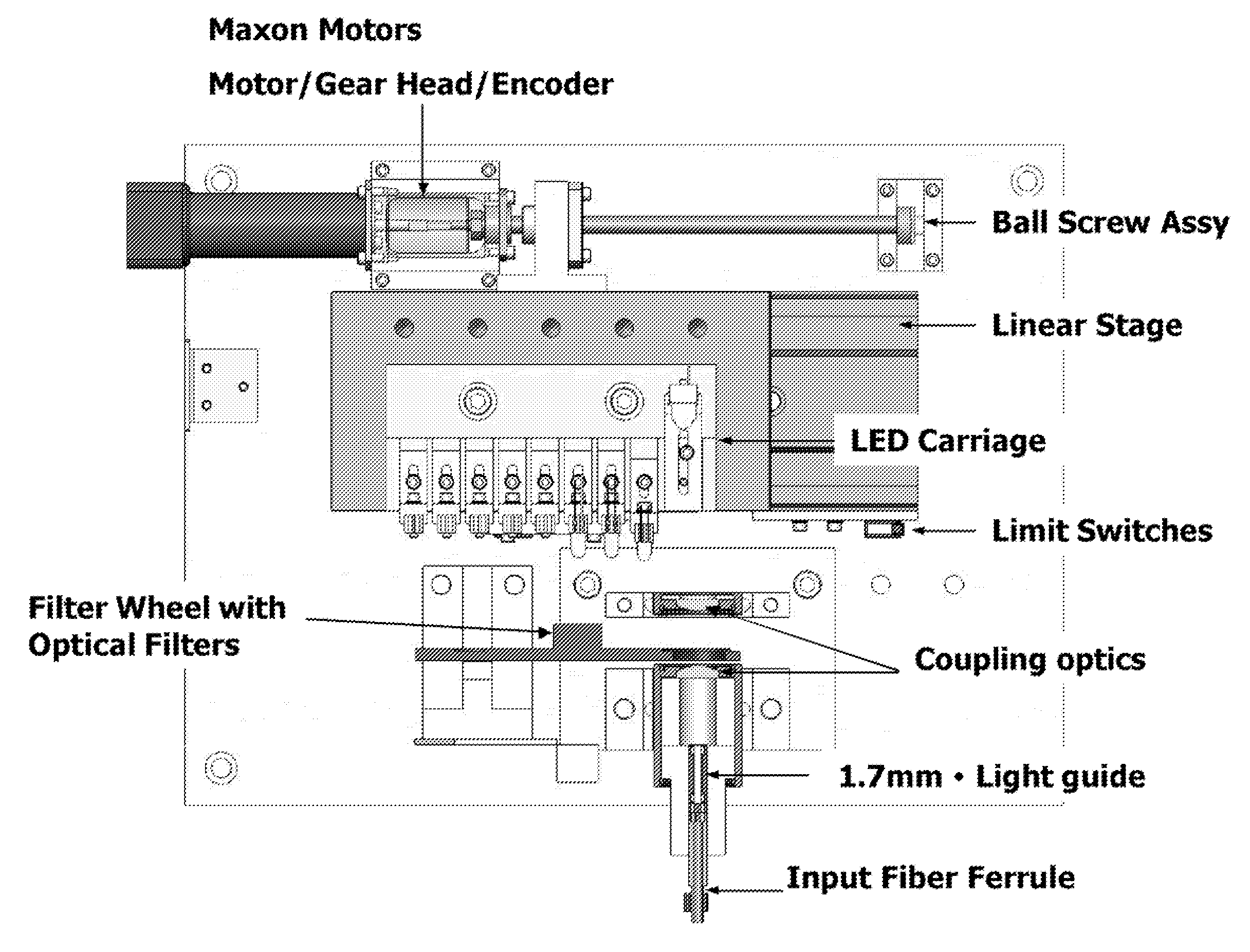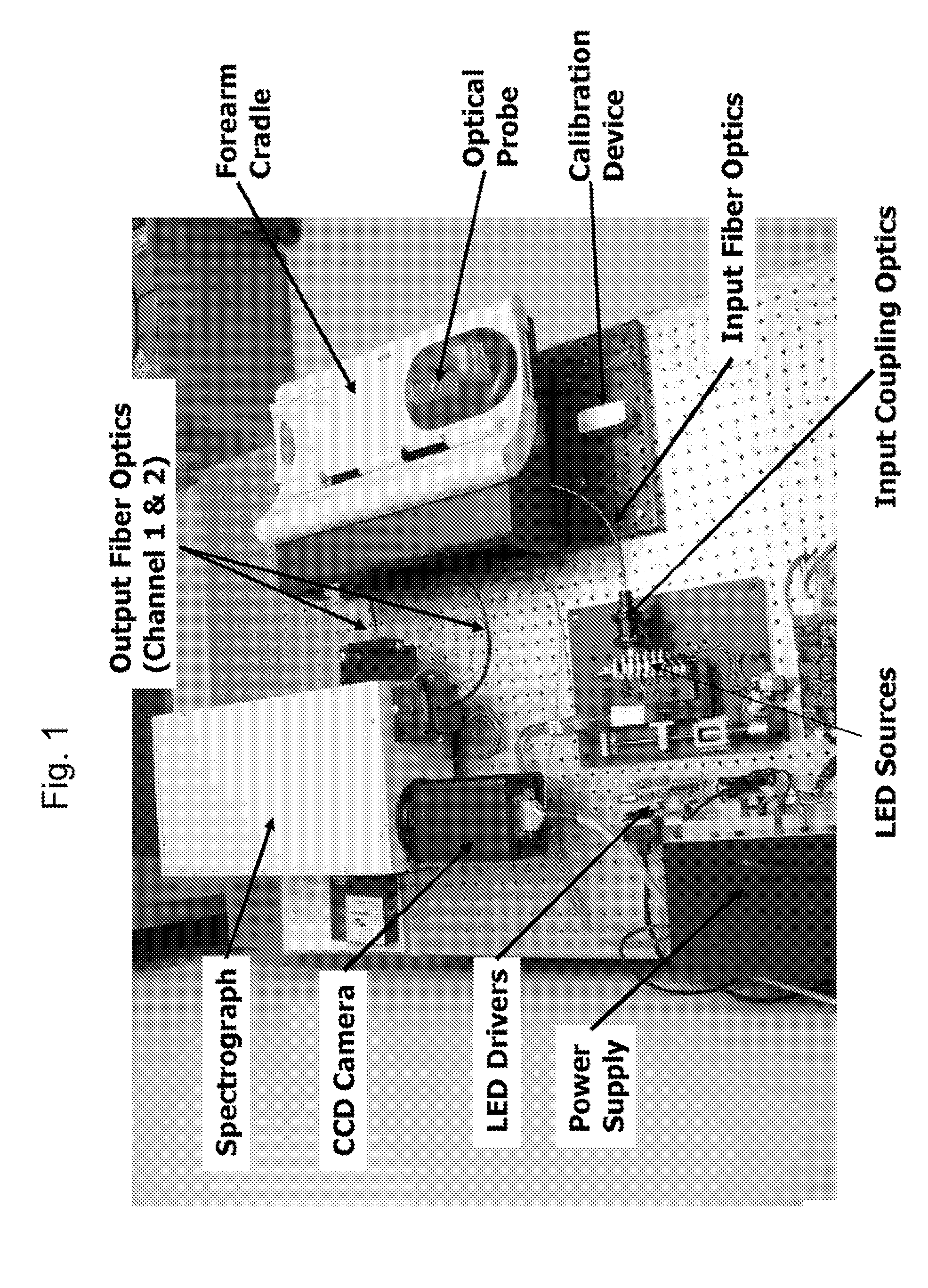Method and apparatus to detect coronary artery calcification or disease
a technology of coronary artery calcification and detection method, applied in the direction of instruments, fluorescence/phosphorescence, diagnostics using spectroscopy, etc., can solve the problem of uncompletely understood risk factors for cad in these populations
- Summary
- Abstract
- Description
- Claims
- Application Information
AI Technical Summary
Problems solved by technology
Method used
Image
Examples
Embodiment Construction
[0059]The present invention uses an association between skin intrinsic fluorescence, a marker of skin collagen AGEs, and CAC. Increased levels of AGEs have been associated with arterial calcification of the coronary arteries in hemodialysis patients, with medial wall calcification of the internal thoracic artery of diabetic patients with coronary artery disease, and with medial wall calcification of the limbs of diabetic patients with neuropathy. See K. Taki et al., “Oxidative stress, advanced glycation end product, and coronary artery calcification in hemodialysis patients,” Kidney Int 70:218-24, 2006; N. Sakata et al., “Calcification of the Medial Layer of the Internal Thoracic Artery in Diabetic Patients: Relevance of Glycoxidation,” J Vasc Res 40:467-574, 2003; M. Edmonds et al., “Medial arterial calcification and diabetic neuropathy,” British Medical Journal 284:928-30, 1982; and F. Goebel and H. Fuessl, “Mockenberg's sclerosis after sympathetic denervation in diabetic and non-...
PUM
 Login to View More
Login to View More Abstract
Description
Claims
Application Information
 Login to View More
Login to View More - R&D
- Intellectual Property
- Life Sciences
- Materials
- Tech Scout
- Unparalleled Data Quality
- Higher Quality Content
- 60% Fewer Hallucinations
Browse by: Latest US Patents, China's latest patents, Technical Efficacy Thesaurus, Application Domain, Technology Topic, Popular Technical Reports.
© 2025 PatSnap. All rights reserved.Legal|Privacy policy|Modern Slavery Act Transparency Statement|Sitemap|About US| Contact US: help@patsnap.com



